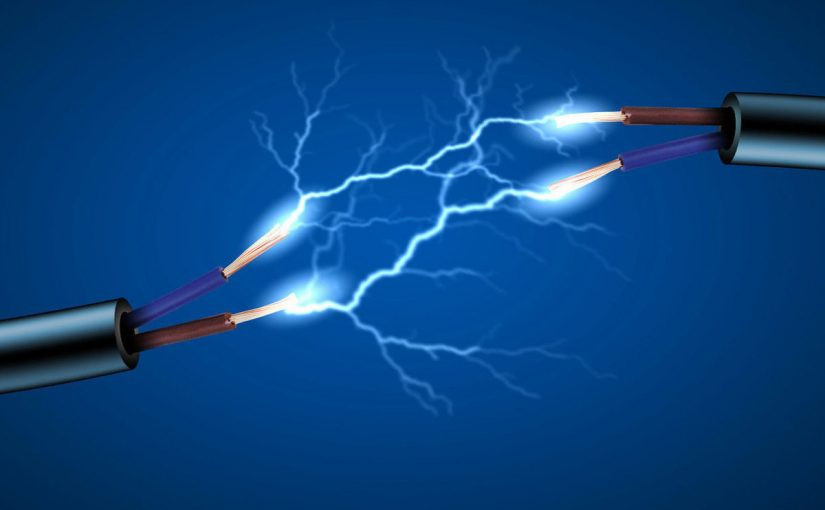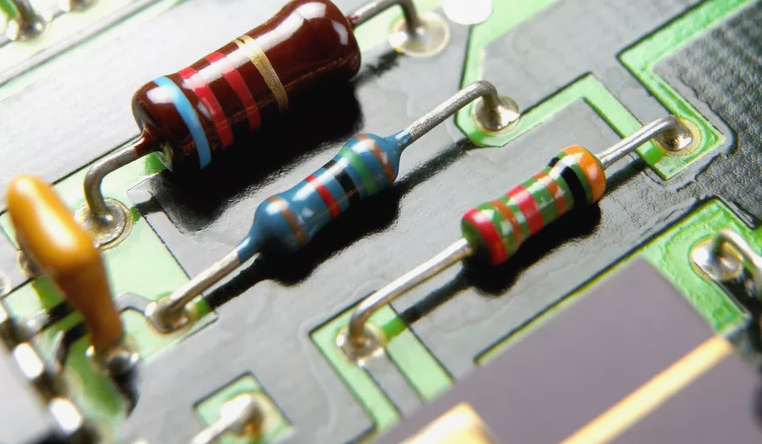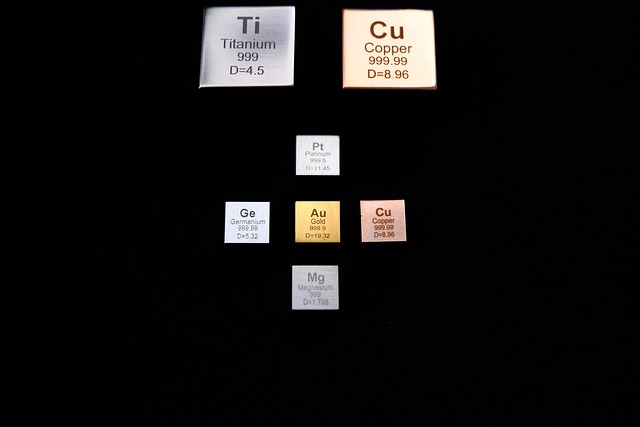Basically, Titanium is a relatively poor conductor of electricity compared to metals like copper and aluminum. However, it still conducts electricity to some extent due to the presence of free electrons in its metallic structure.
Titanium’s hexagonal close-packed crystal structure allows electron movement, although it’s less efficient than the face-centered cubic structure of highly conductive metals.
Moreover, impurities and alloying elements can affect titanium’s conductivity, and its tendency to form surface oxides can hinder electron flow.
While not a primary choice for electrical conductivity, titanium is valued for its other properties such as strength, low density, corrosion resistance, and biocompatibility.
How Can You Understand Electrical Conductivity?

Journey into the realm of electrical conductivity, where electrons dance and materials reveal their capacity to transmit the flow of energy.
Explanation of Electrical Conductivity:
Electrical conductivity is a fundamental property that describes a material’s ability to carry electric current. Additionally, it is essentially the ease with which electric charges (usually electrons) can move through a material.
Moreover, conductivity is measured in units of Siemens per meter (S/m) and is the reciprocal of resistivity. Materials with high conductivity allow electric charges to move easily, while those with low conductivity impede the flow of charges.
Conductors vs. Insulators:
Conductors are materials that have high electrical conductivity and readily allow the flow of electric charges. Metals are classic examples of conductors due to the presence of free electrons that can move through the material.
On the other hand, insulators Have low conductivity and inhibit the movement of electric charges. This is often because the electrons are tightly bound to atoms and do not move freely.
Role of Electrons in Electrical Conduction:
In most cases, electrical conduction is facilitated by the movement of electrons. In metals, the outermost electrons of atoms are relatively loosely bound and can move between atoms.
Moreover, these are referred to as “free electrons” or “conduction electrons.” When a potential difference (voltage) is applied across a conductor, these free electrons drift in response to the electric field, creating an electric current.
What Are The Factors Influencing Electrical Conductivity of Materials?
Here the exploration of how material properties, temperature fluctuations, and atomic structures converge to orchestrate the symphony of electron flow.”
Atomic Structure and Bonding:
The arrangement of atoms and the nature of their bonding significantly affect a material’s electrical conductivity.
In metals like titanium, the atoms are arranged in a regular lattice structure, allowing for the relatively free movement of electrons.
Moreover, the metallic bonding in metals results from the sharing of electrons among a sea of atoms, contributing to their conductivity.
Presence of Free Electrons:
Materials with high electrical conductivity typically have a significant number of free electrons available for conduction.
In metals, the presence of a large number of free electrons due to their unique atomic structure contributes to their high conductivity.
Band Structure and Energy Levels:
The electronic band structure of a material plays a critical role in determining its conductivity. In conductors, like metals, there is a partially filled band of energy levels (the conduction band) that allows electrons to move freely.
In insulators, there is a significant energy gap (band gap) between the valence band (occupied electron states) and the conduction band (empty electron states), which prevents easy movement of electrons.
What Are Titanium’s Properties and Its Structure

The remarkable properties and intricate crystal structure of titanium, a metal that seamlessly blends strength, lightness, and corrosion resistance.”
Overview of Titanium’s Characteristics:
Titanium is a unique metal known for its exceptional strength-to-weight ratio, corrosion resistance, and biocompatibility.
Moreover, these properties make it highly valuable in various industries, including aerospace, medical implants, and electronics.
Titanium’s relatively low density and high melting point contribute to its suitability for these applications.
Crystal Structure of Titanium:
Titanium crystallizes in a hexagonal close-packed (HCP) crystal structure. This arrangement consists of closely packed layers of atoms with a hexagonal pattern.
Moreover, the HCP structure influences the mobility of electrons within the material and contributes to its electrical conductivity.
Electronic Configuration of Titanium:
Titanium has an atomic number of 22, meaning it has 22 electrons. Its electronic configuration is [Ar] 3d^2 4s^2, indicating that it has two electrons in its outermost 4s orbital and two electrons in the d orbitals.
In addition, the presence of partially filled d orbitals plays a crucial role in its electrical and chemical behavior.
What Are The Mechanisms of Electrical Conductivity in Titanium?
The intricate mechanisms that empower this metal to conduct electricity, showcasing its unique blend of electron mobility and structural integrity.
Contribution of Electrons in the Outer Energy Levels:
The two electrons in the outermost 4s orbital of titanium contribute to its electrical conductivity. Moreover, these electrons are relatively loosely bound to the nucleus and can move freely in response to an electric field, creating an electric current.
In addition, the proximity of the 4s orbital to the conduction band allows these electrons to participate in conduction.
Role of the d-Band Electrons:
The partially filled d orbitals in titanium’s electronic configuration also play a significant role in its conductivity.
In addition, these d electrons can contribute to the movement of charges and the flow of electric current. The presence of partially filled d orbitals creates available energy levels for electrons to transition to when conducting electricity.
Interaction with Lattice Vibrations:
The lattice structure of titanium can experience vibrations due to thermal energy. These lattice vibrations, also known as phonons, interact with the conduction electrons, scattering them as they move through the lattice.
Moreover, this scattering process can influence the material’s electrical conductivity, with higher temperatures generally leading to increased scattering and reduced conductivity among different metals.
How Can You Use It for Practical Applications?
Here are several places where you can use it.
Titanium’s Use in Electrical Components:
Titanium’s electrical conductivity may not be as high as that of traditional conductors like copper or aluminum, but it still finds applications in electrical components.
Moreover, it is used in electrical connectors, switches, and other devices where its unique combination of properties, such as corrosion resistance and lightweight nature, are advantageous.
In addition, its conductivity is often sufficient for these applications, especially when combined with other beneficial characteristics.
Titanium’s Role in Aerospace and Electronics Industries:
Titanium is extensively used in the aerospace and electronics industries due to its exceptional properties.
In aerospace, its lightweight yet strong nature makes it ideal for aircraft components, including frames, engines, and landing gear. In electronics, titanium-based materials are used for coatings, housings, and casings due to their electromagnetic shielding capabilities and thermal properties.
Advantages and Limitations of Using Titanium for Conductivity:
Advantages of using titanium for conductivity-related applications include its corrosion resistance, biocompatibility (for medical devices), and low density.
However, its lower electrical conductivity compared to traditional conductors can be a limitation, particularly in applications requiring high current-carrying capacity.
Additionally, its cost and the challenges associated with processing and joining titanium components are considerations to be weighed.
What Are The Factors Affecting Titanium’s Conductivity?
Peering into the conductivity realm of titanium, navigate through the myriad factors that shape its electron dance, from impurities and crystal defects to temperature variations.
Effects of Impurities and Alloying Elements:
The electrical conductivity of titanium can be influenced by the presence of impurities and alloying elements. Moreover, impurities can introduce scattering centers for electrons, reducing conductivity.
In addition, alloying elements like vanadium or aluminum can alter the electronic structure, affecting the mobility of conduction electrons and potentially modifying the conductivity of titanium alloys.
Temperature Dependence of Conductivity:
The conductivity of titanium, like many other materials, is temperature-dependent. As temperature increases, lattice vibrations and scattering of electrons can both contribute to a decrease in conductivity.
Moreover, understanding this relationship is crucial for designing applications that involve varying temperature conditions.
Influence of Grain Boundaries and Defects:
Grain boundaries and defects within the crystalline structure of titanium can affect its electrical conductivity.
Additionally, these imperfections can hinder the movement of electrons and introduce scattering, leading to reduced conductivity. Techniques to control grain size and minimize defects are important for optimizing titanium’s conductivity.
FAQs
Does titanium conduct electricity?
Yes, titanium conducts electricity, although its conductivity is lower compared to traditional conductors like copper or aluminum.
Is titanium an anode or cathode?
Titanium can function as both an anode and a cathode, depending on the specific electrochemical context and the conditions it is subjected to.
Is titanium magnetic or steel?
Titanium is not magnetic, unlike steel, due to its specific atomic arrangement and electronic configuration.
Is titanium a good conductor of electricity?
Titanium is not considered a good conductor of electricity compared to metals like copper or aluminum.
Is titanium a conductor or insulator?
Titanium is neither a conductor nor an insulator; it’s categorized as a semiconductor.
Does titanium conduct electricity when solid?
Yes, titanium does conduct electricity when in its solid form, although its conductivity is relatively low compared to metals like copper or silver.
Why is titanium an insulator?
Titanium is not typically considered an insulator; it’s a conductor due to its ability to allow the movement of electrons, although not as effectively as some other metals.
Conclusion
In conclusion, the exploration into why titanium conducts electricity has unveiled a complex interplay of factors that define its electrical behavior. Titanium, with its distinctive properties and crystal structure, possesses conductivity characteristics that set it apart from traditional conductors like copper and aluminum.
Moreover, its role in various industries, including aerospace, electronics, and medical devices, is a testament to its versatile nature and the advantageous properties it offers.
The understanding of titanium’s conductivity is grounded in the principles of electronic configuration, band structure, and lattice interactions. The presence of free electrons, especially those in the outer energy levels, and the partially filled d orbitals contribute to its electrical conductivity.
Furthermore, the interaction between these electrons and lattice vibrations influences the material’s overall conductivity.
As titanium is integrated into electrical components, the advantages of its corrosion resistance, lightweight nature, and biocompatibility enhance its value in specific applications.
However, the comparative lower conductivity necessitates careful consideration in applications requiring high current flow. The effects of impurities, alloying elements, temperature variations, grain boundaries, and defects further underscore the intricacies of titanium’s electrical behavior.











